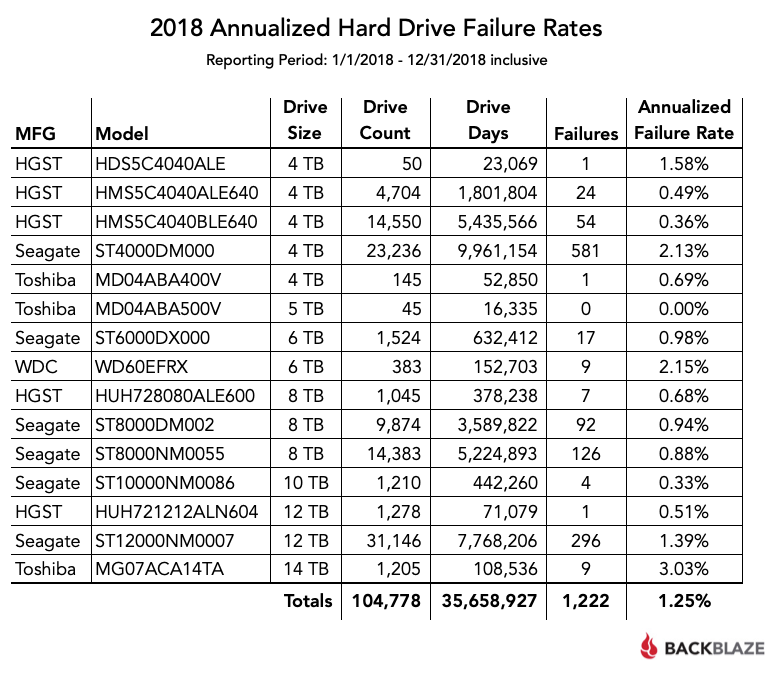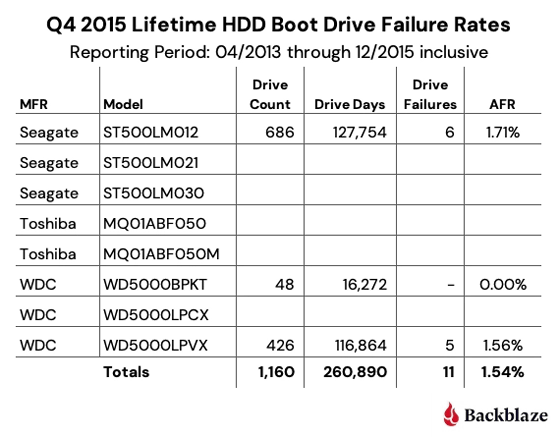

Why are mainly Hitachi and Seagate drives in BackBlaze’s data center? The company said it just can’t source other brands at the prices it wants. What she doesn't understand is how hard a decision this is for me. The annual failure rate figure is calculated based on a certain drive failing with the service life factored in to it. It’s better than a typical consumer’s sample size of one, but clearly the 22,731 Hitachi hard drives and the 36,863 Seagate drives lend more credibility to the survey.īackBlaze’s hard drive report shows lowest number of drive failures in a quarter ever for the cloud storage companyīackBlaze’s numbers aren’t quite straightforward, though.

This trivial increase would seem to indicate that the effect of the. The lifetime failure rate for the drive models in production rose slightly, from 1.70 at the end of Q2 to 1.73 at the end of Q3. Below are the lifetime failure rates for all of our drive models in service as of September 30, 2019. The average temperature of the hard drives in the same storage servers over the same period was 29.1 degrees Celsius. Backblaze has updated its hard drive report for Q3 of 2022, showing its most reliable and least reliable drives over the past quarter and year. Lifetime Hard Drive Stats through Q3 2019. Backblaze surpasses the other options by enabling backup of attached hard drives. At the end of Q1 2018 Backblaze was monitoring 98,188 hard drives used to store data. For a single-user setup, Backblaze provides. For 2022, the average temperature was 34.9 degrees Celsius. Hard Drive Reliability Statistics for Q1 2018. BackBlaze has just 238 Toshiba hard drives in service, with Western Digital drives pushing the sample to 1,691. For 2022, the average temperature varied only one degree Celsius from the low of 34.4 degrees Celsius to the high of 35.4 degrees Celsius over the period. Hard drives from Toshiba and Western Digital are also represented, but one weakness of the data is the much smaller sample size.

That’s good, but the overall winner is still Hitachi, which has tracked at just about 1 percent for the last three surveys. This time around, though, Seagate dropped its failure rate to 3.48 percent on a total 36,863 drives. 230,921 DRIVE FAILURES 2,963 DRIVE DAYS 79M ANNUALIZED FAILURE RATE 1.


 0 kommentar(er)
0 kommentar(er)
